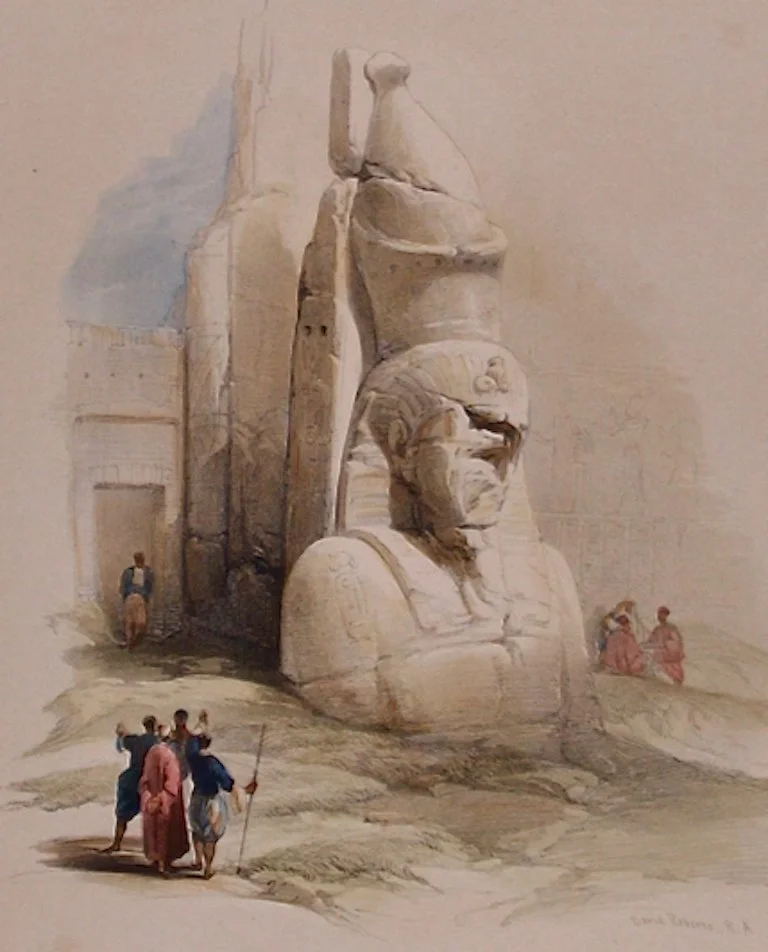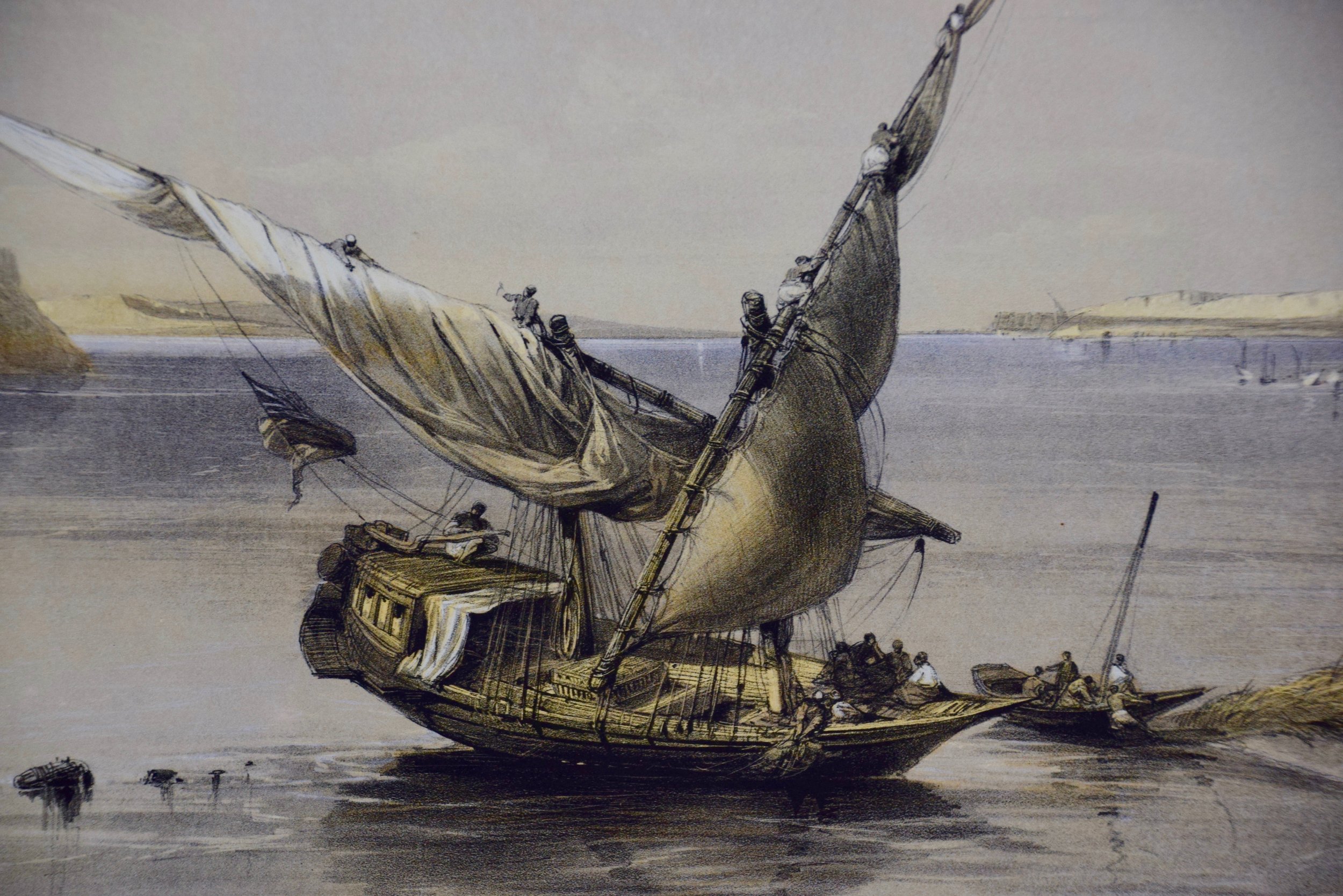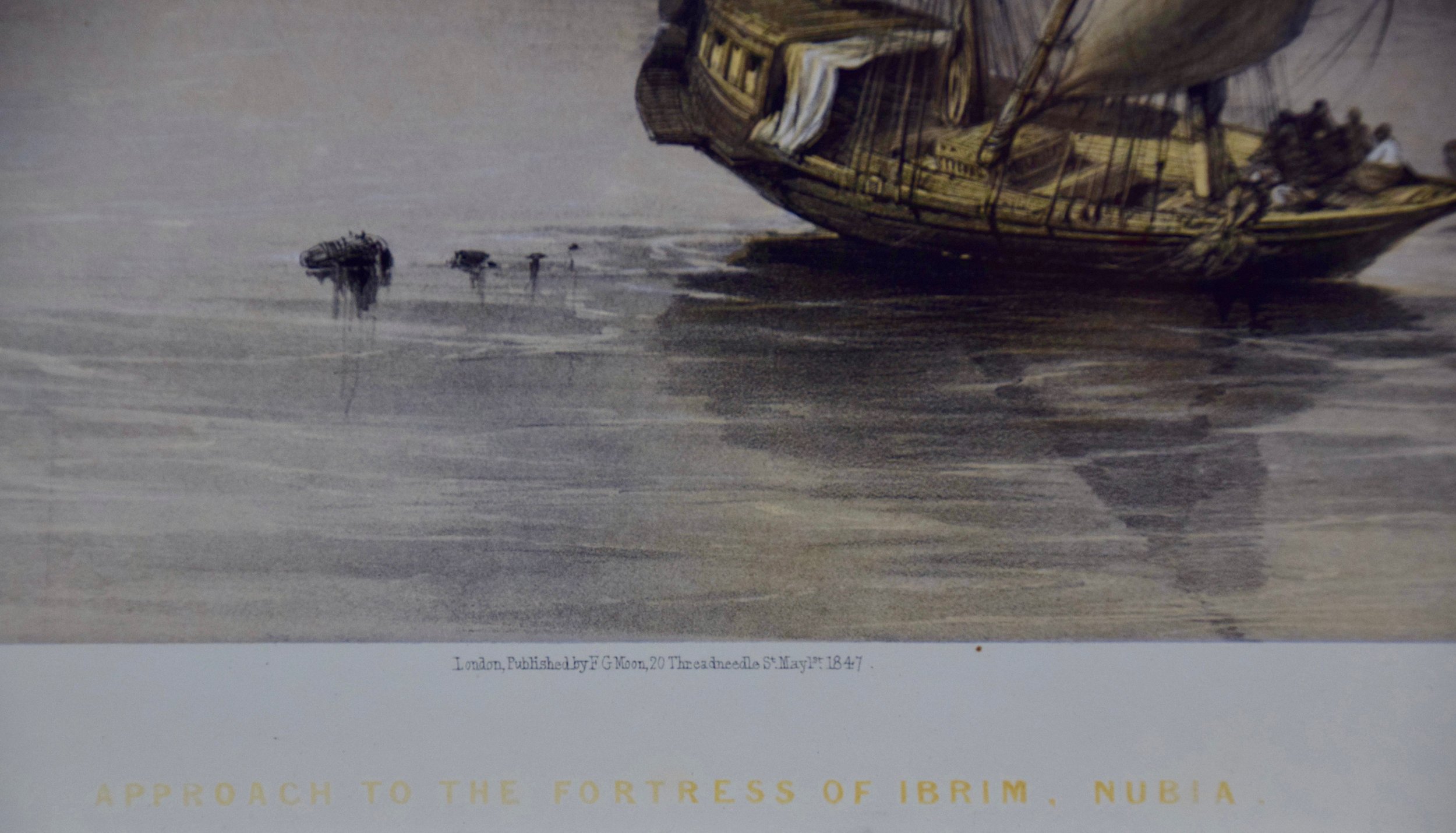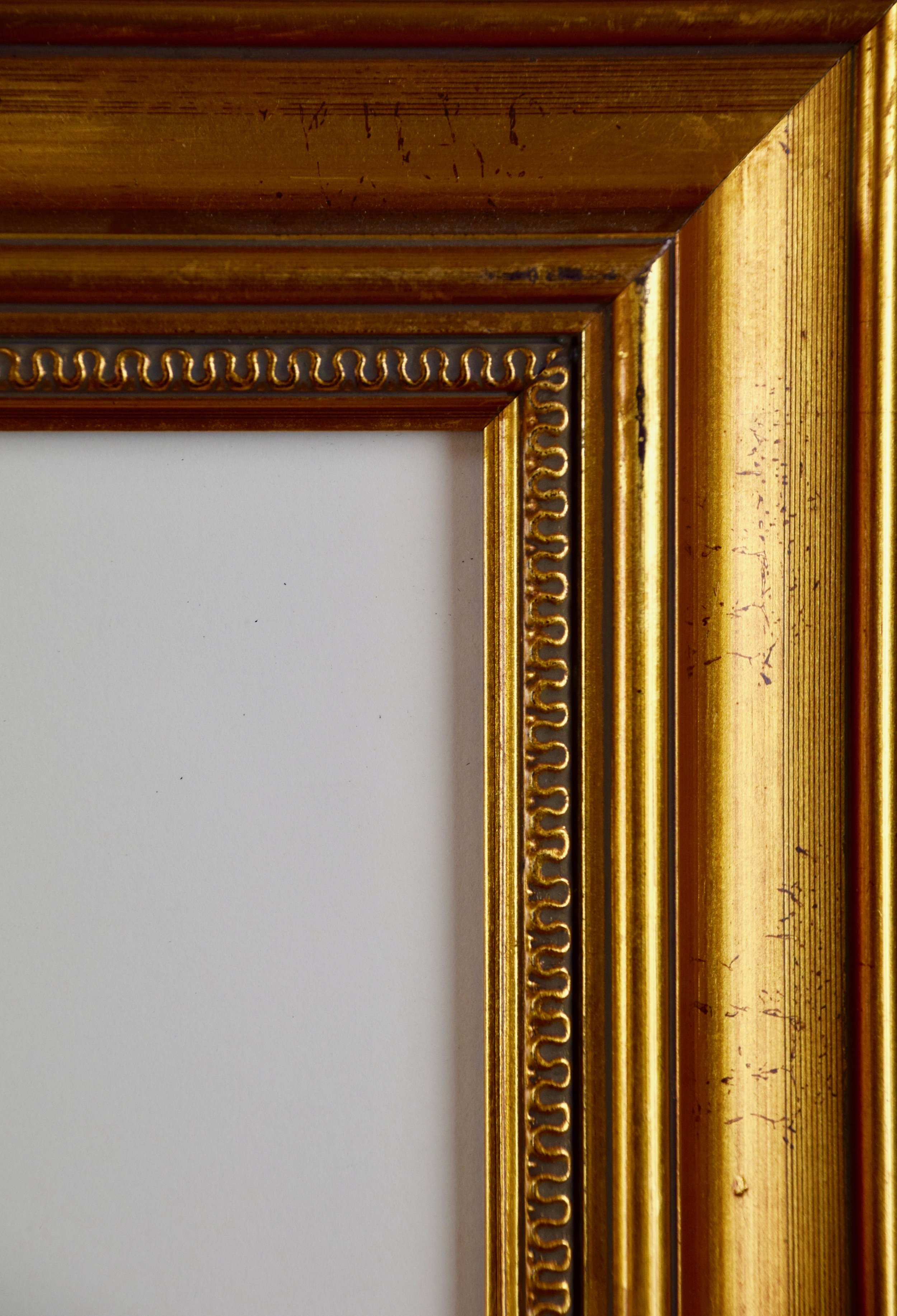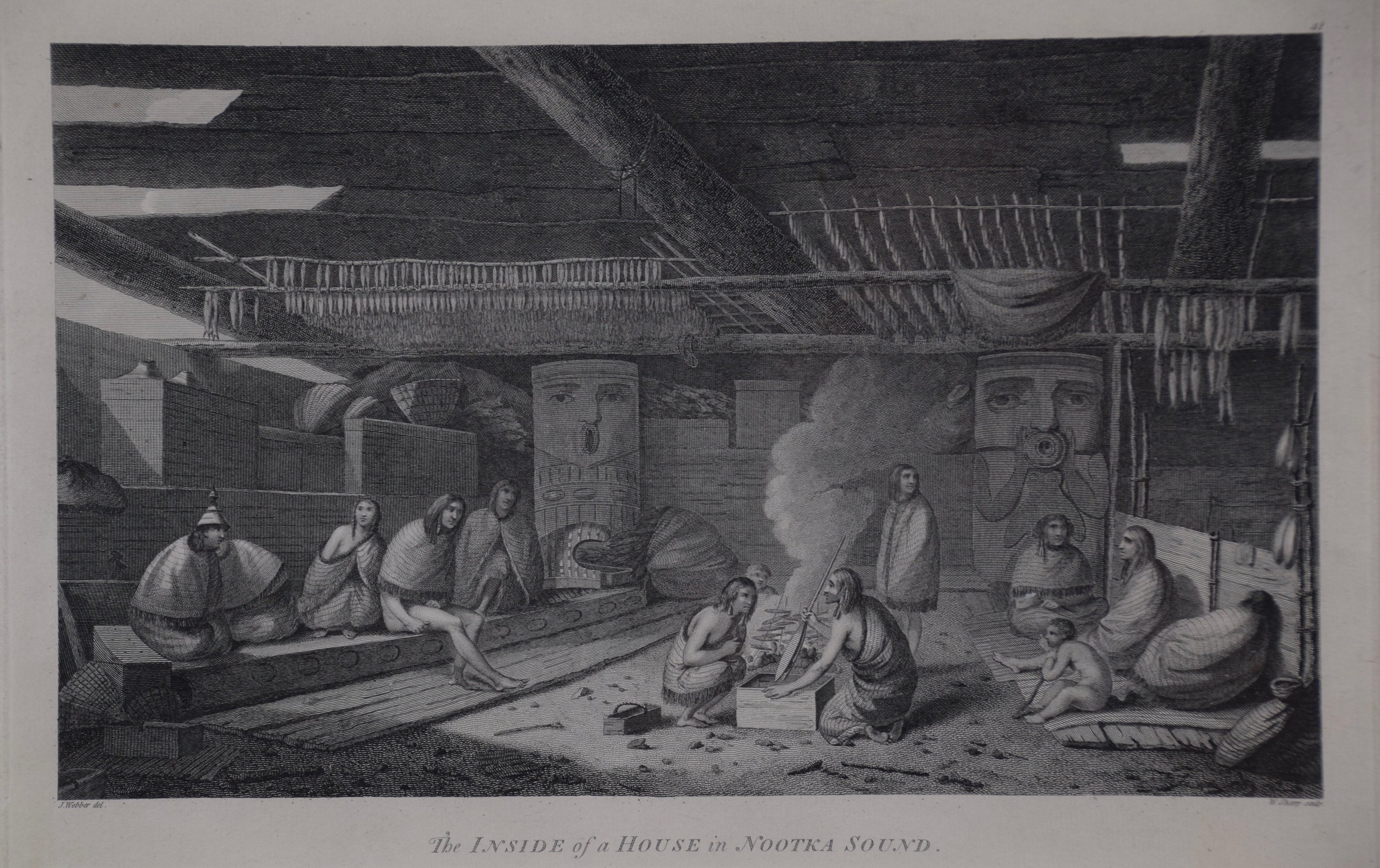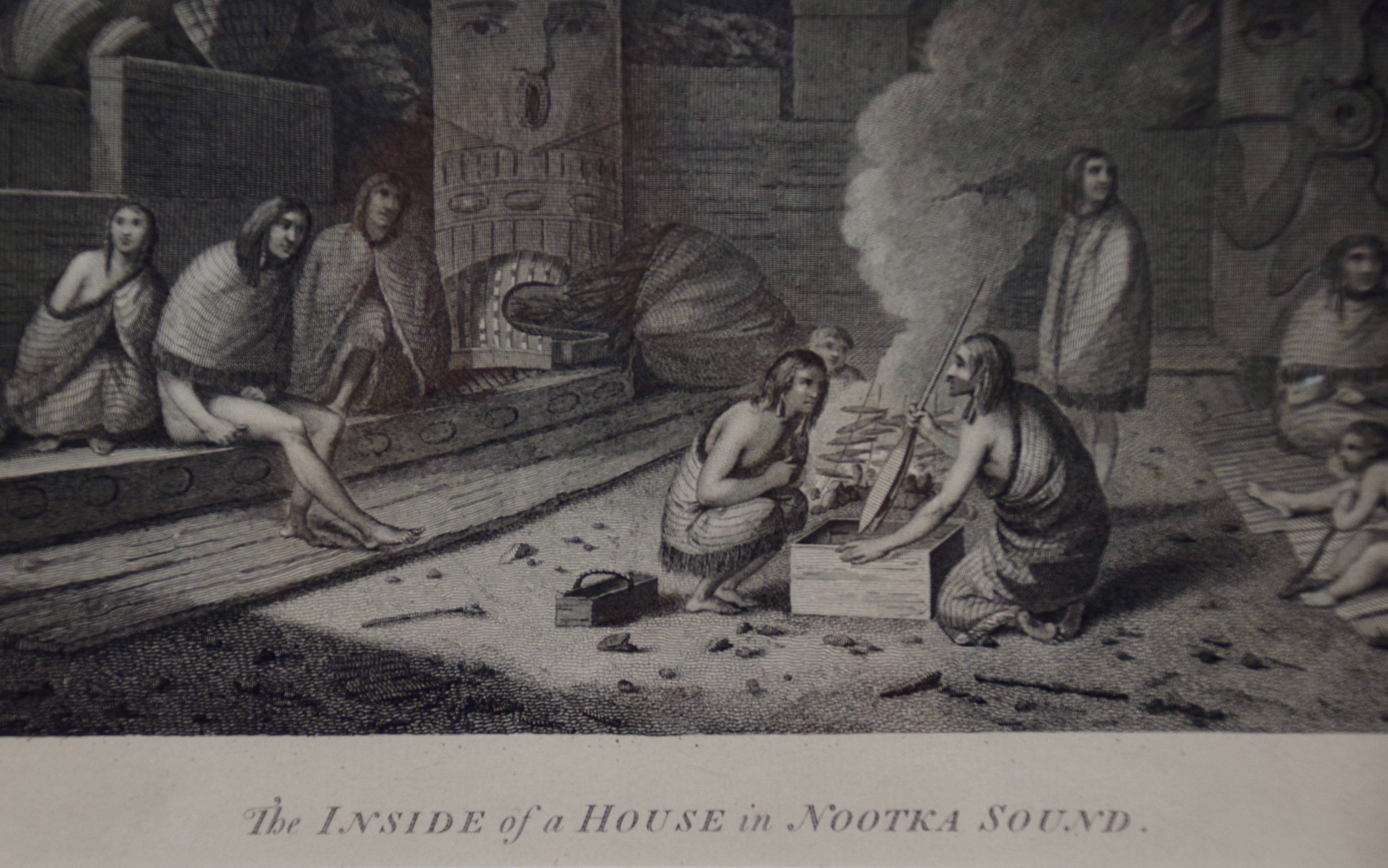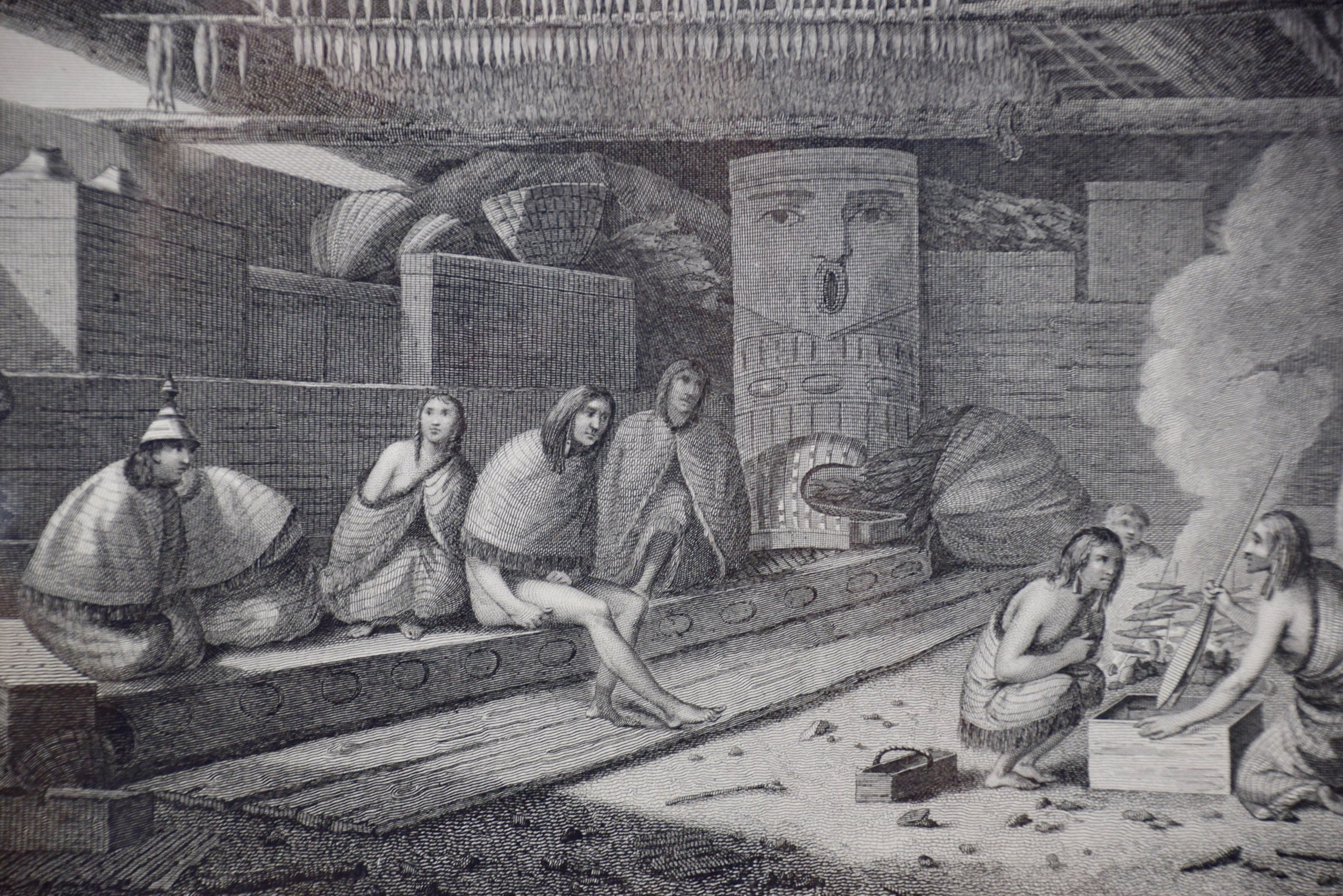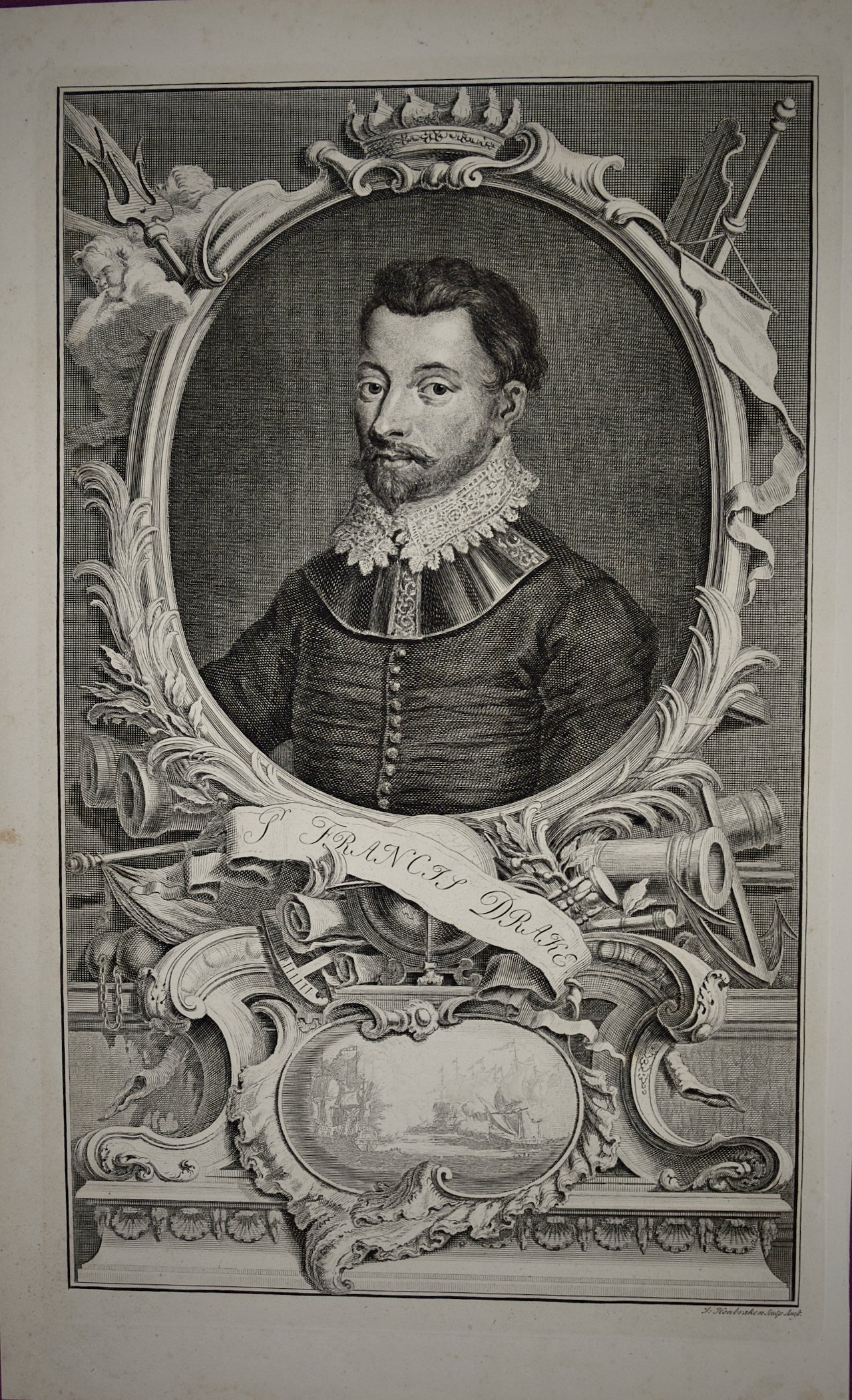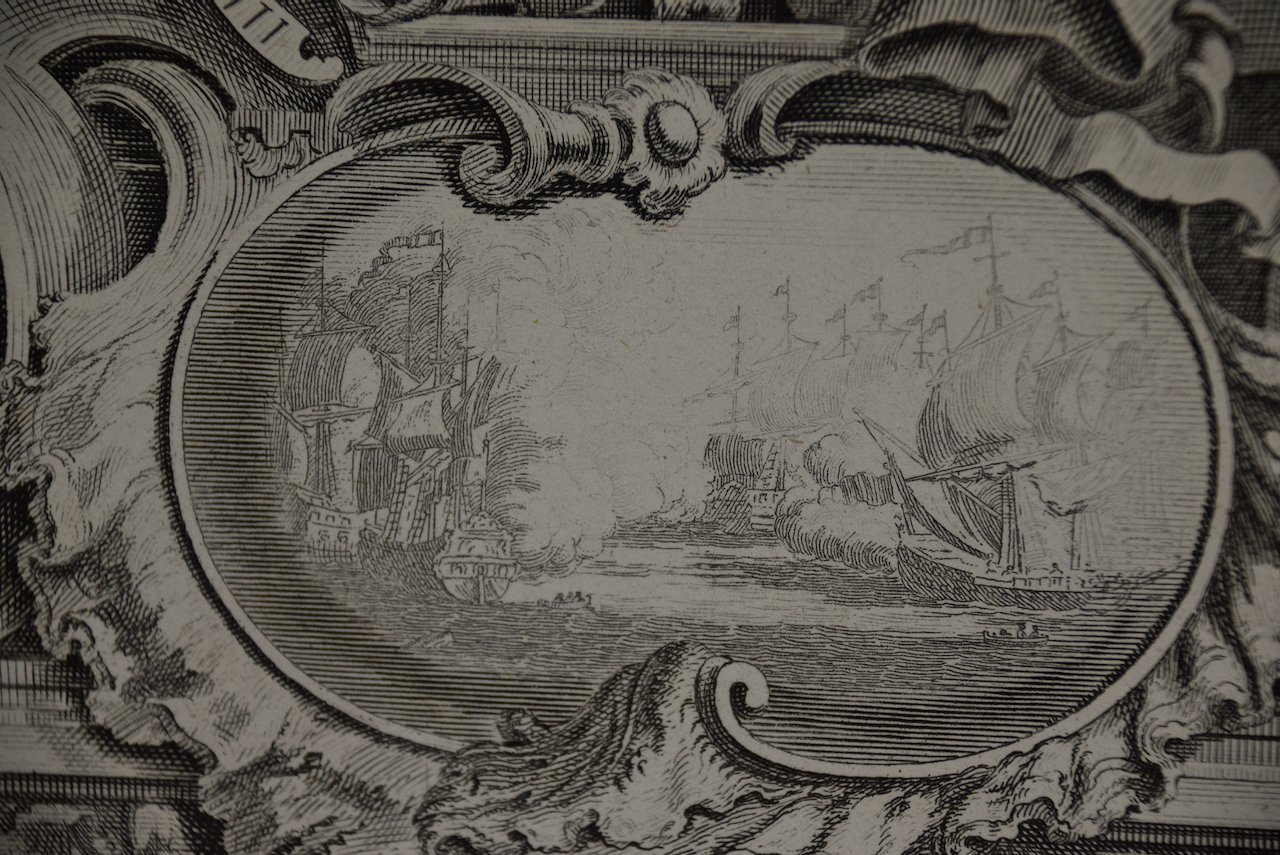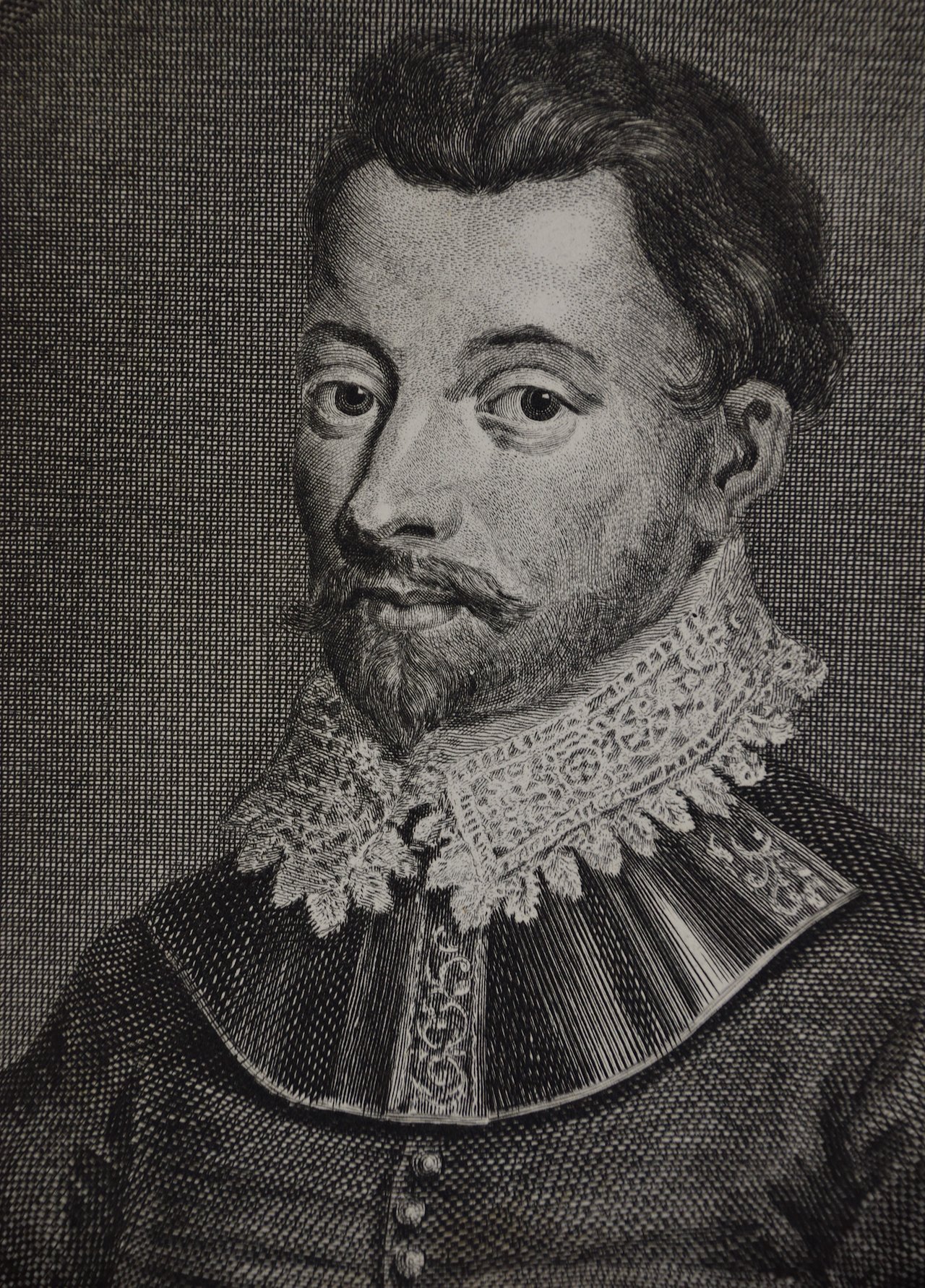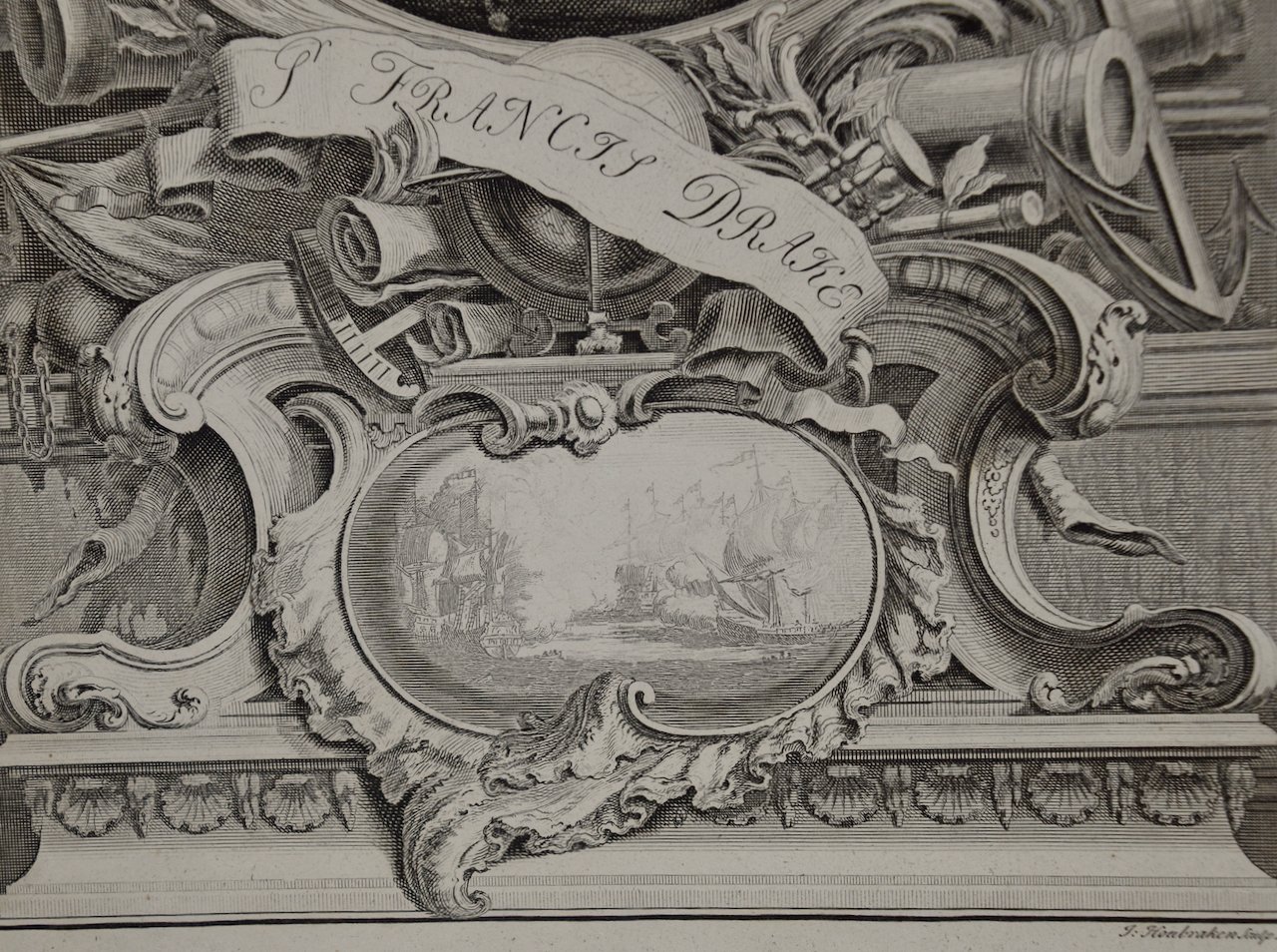This framed hand-colored lithograph depicts a colossal statue of Pharaoh Ramses II partially visible from its mid chest up to its mammoth headress. The majority of the statue was still buried below the earth and sand at the time of Roberts' visit in the 1830's. Several Egyptians in traditional costumes stand or sit around the statue occupied in conversation.
This beautiful hand-colored lithograph is presented in an attractive brown wood frame augmented by a gold-colored inner border, a cream mat and a gold-colored fillet. The framing and glazing utilizes museum quality archival materials. The frame measures 22.5" high, 18.5" wide and 1.25" in depth. The frame and print are in excellent condition. Many additional framed and unframed David Roberts' lithographs of Egypt are available on 1stdibs and on our website, which would make a beautiful display grouping of two or three prints. A discount is available for of two or more of these prints. We have many other David Roberts lithographs of Egypt and the Holy Land that are not yet listed. Please let us know if you would like to know about these.
David Roberts (1796-1864) was born outside of Edinburgh, Scotland. At age 10 he became a house painter’s apprentice. He continued painting houses and eventually theater scenes in Edinburgh and then in London. His friend, J. M. W. Turner, recognized his artistic talent and encouraged him to become a full-time artist.
In 1839 Roberts traveled to Egypt and then in 1840, through the Holy Land, concluding in Jerusalem. Upon his return to England, F. G. Moon agreed to publish lithographs created by Louis Haghe from Robert’s sketches and watercolors. This publication was highly acclaimed and very popular for its esthetic quality, its historical and topographical accuracy, and Robert’s dramatic depiction of his scenes. Queen Victoria and Charles Dickens were among the subscribers who collected his works. Roberts' and Haghe’s duotone lithographs, often colored, remain extremely sought-after today and have been rising steadily in value.



